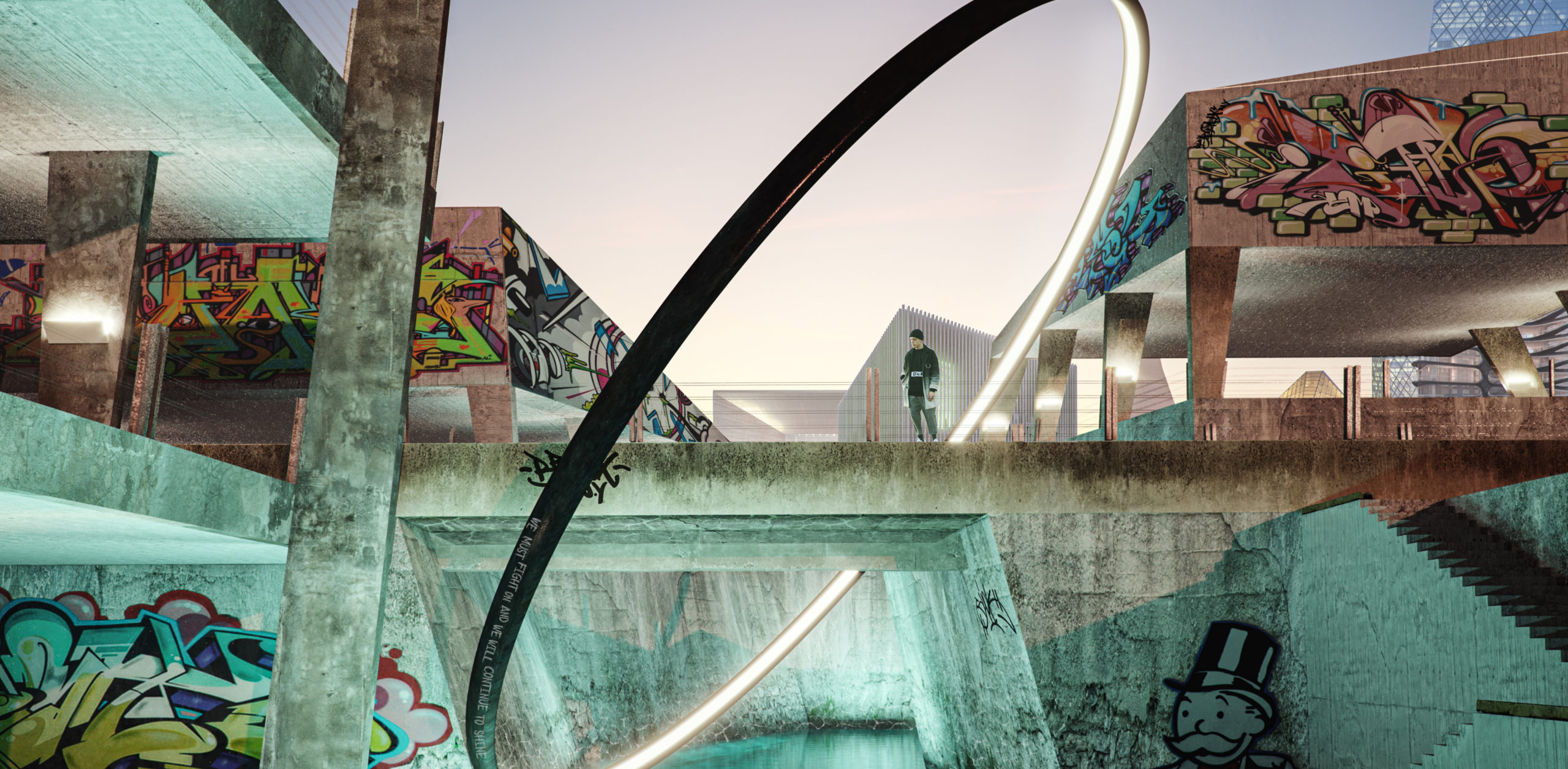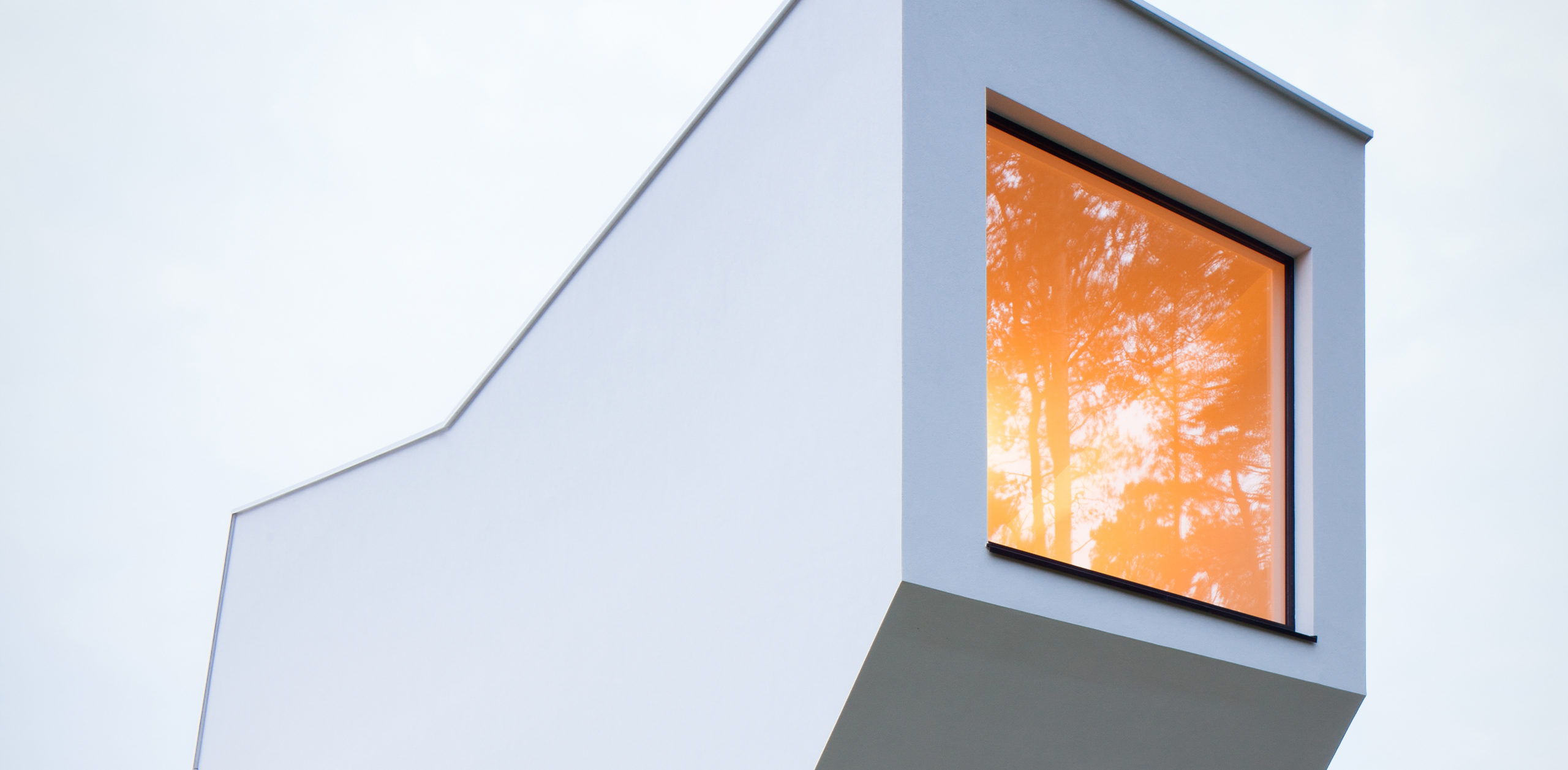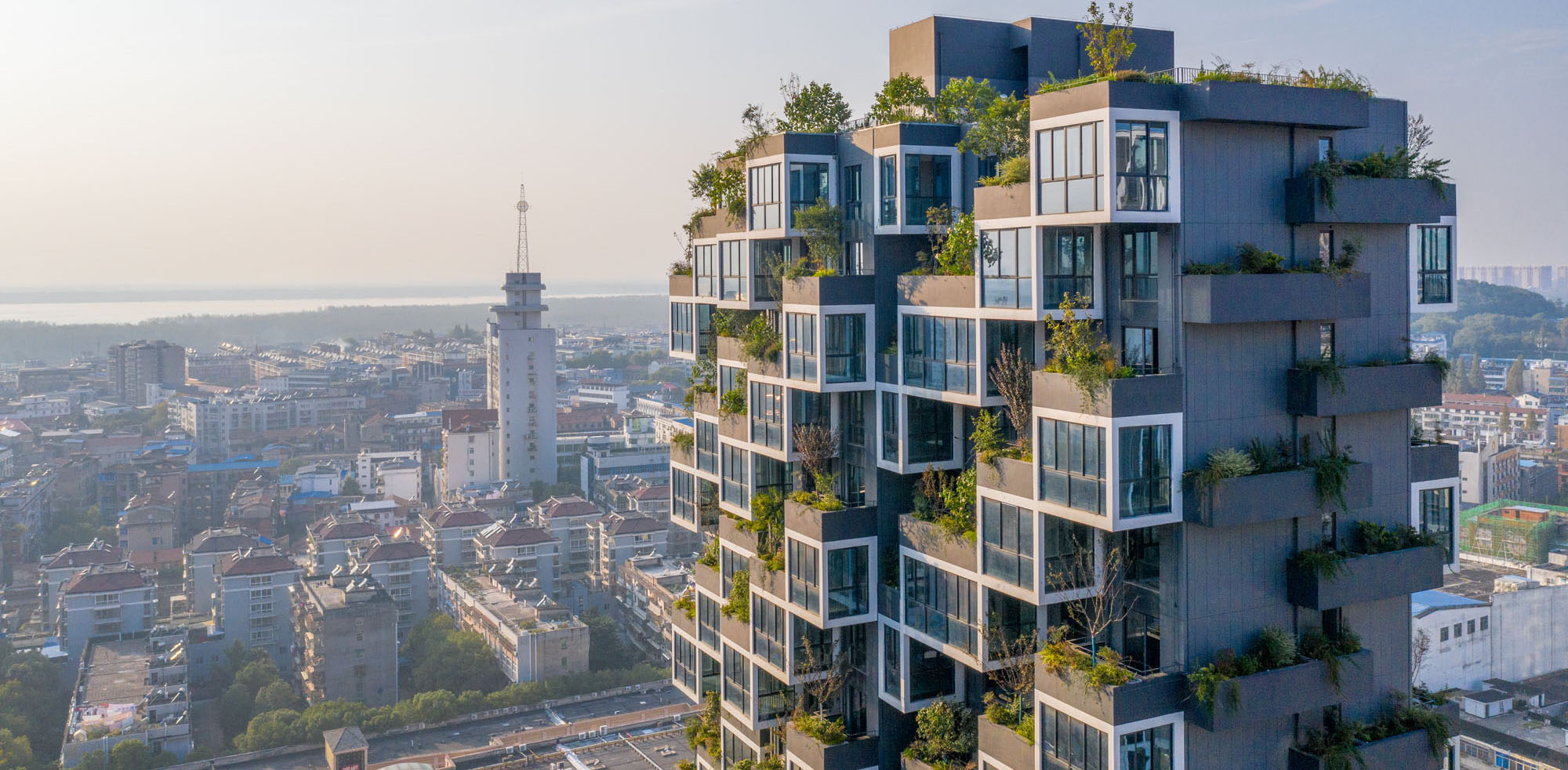We are thrilled to announce the winners of Architizer's inaugural Vision Awards, the world’s biggest awards program dedicated to the art of architectural representation. Sign up to receive future program updates >
Cities are the 21st century’s dominant form of civilization. Half the planet’s population lives in and around cities. They have been described as the world’s engines, generating four-fifths of our global GDP. If all were lost through climate disaster, societal collapse, pandemic or war, with their vast resources, cities are where humanity’s struggle for survival would undoubtedly take place.
We each see our cities, and their architecture, in our own way. Some people choose to explore and protect historical landmarks, emphasizing the importance of understanding what the past lives of our buildings can tell us about our background. While others see the potential of the future – cities offer opportunities for new technology and advanced architecture. In each instance, our imagination visualizes what may have been and what may be. Today with the wonders of 3D visualization and rendering technologies, architects are able to envision their subconscious producing visuals that paint the pictures from their minds for others to see.
These ten visualizers use rendering technologies to express their emotions on the past, present and future of urban landscapes. Each submission illustrates narratives that explore our current condition and predicts what the future may hold for humanity based on the information we have today.
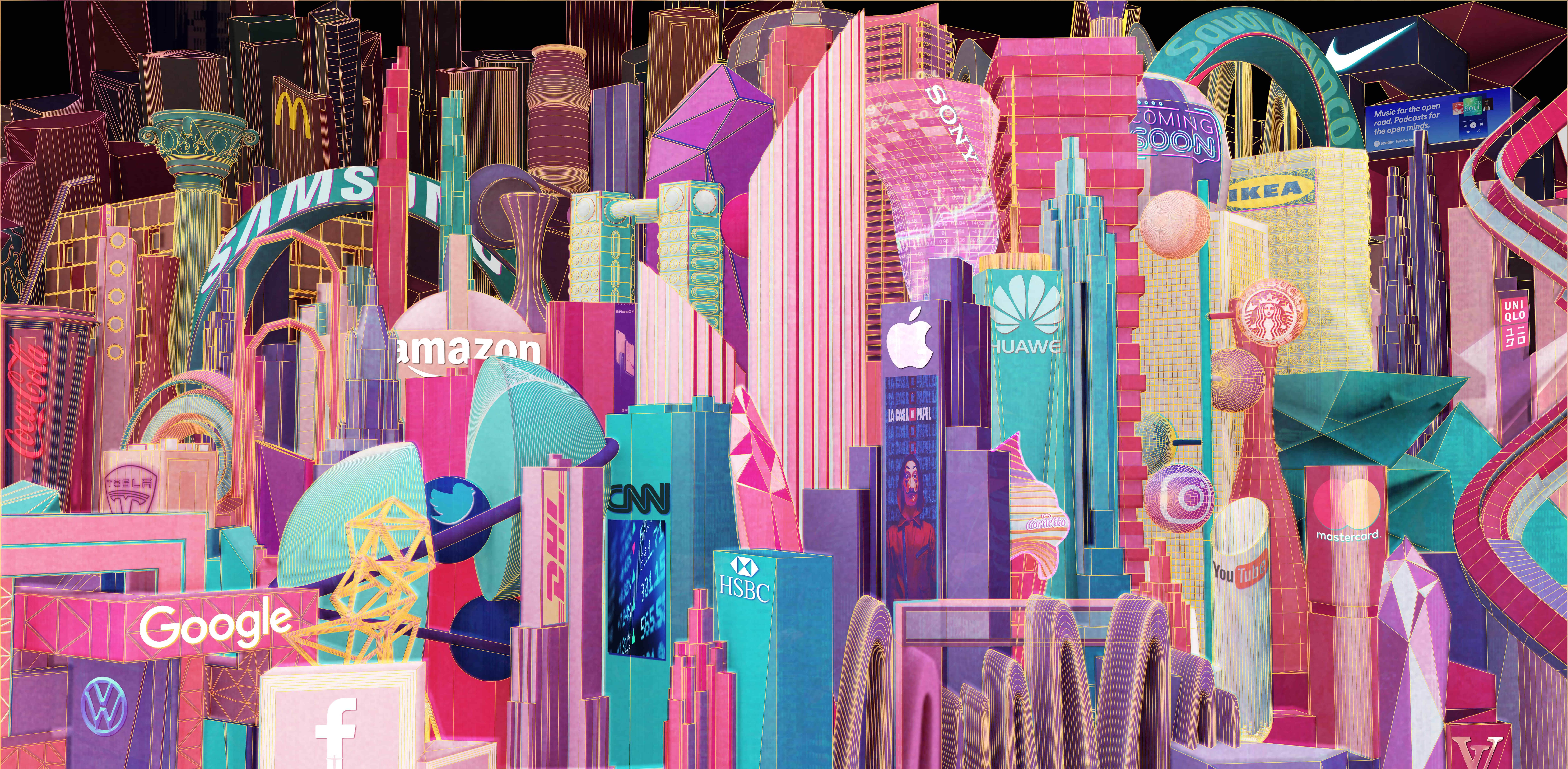
“A City Corporation” by Tara Fartash-Naini
Consumerism plays a lead role in the success of cities. Having access to everything you could want or need at a moment’s notice is often what attracts people and businesses to the hubs of activity and production. In this rendering, Tara Fartash-Naini explores the bombardment of advertising and branding that is ever prevalent in city landscapes. They consider the premise of architecture becoming merely a billboard for corporate messaging in an image of a broad city landscape full of buildings void of character, uniqueness or visual identity. 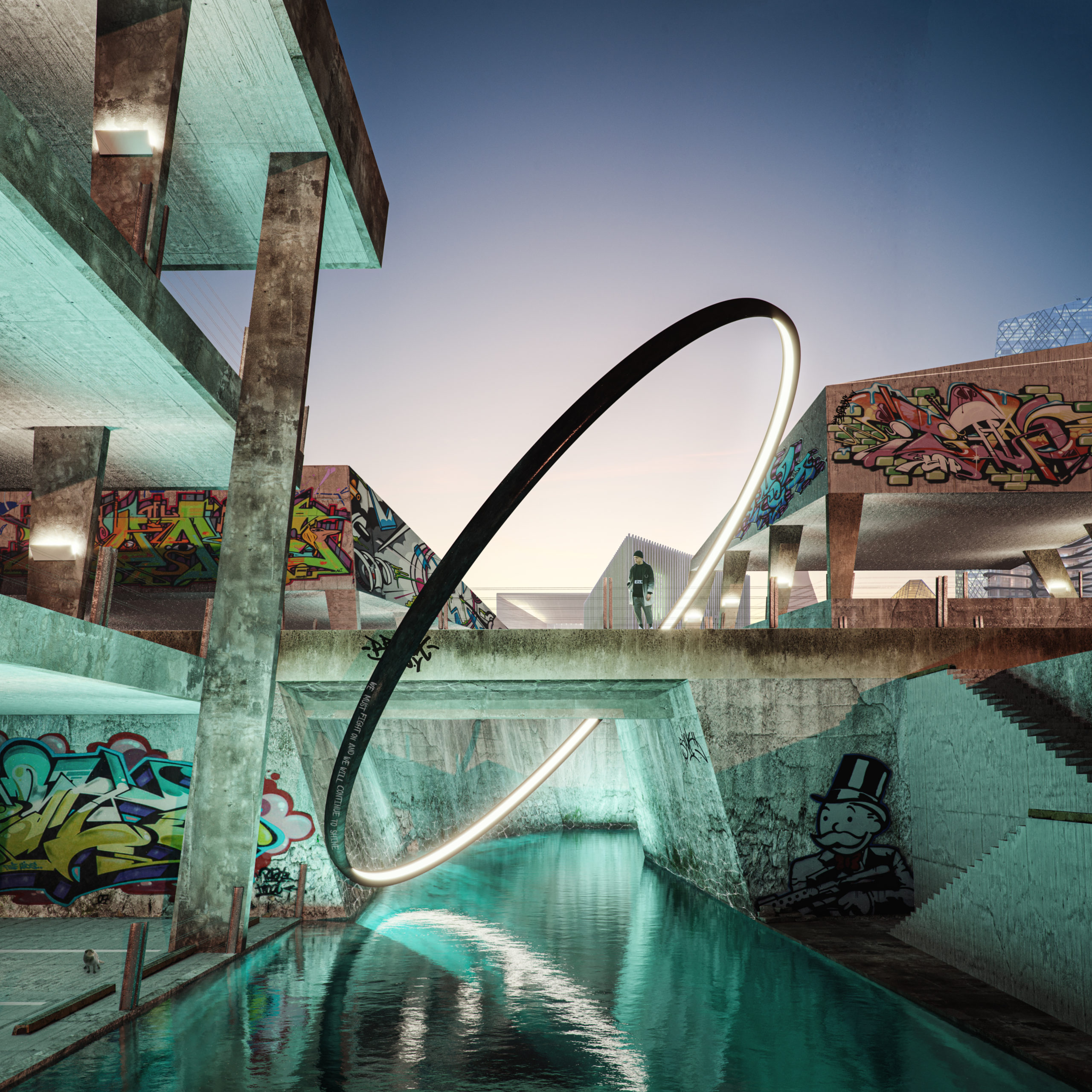
“..IS THIS THE WORLD WE ARE GOING TO LIVE IN?” by John Luke Hodgkins
In a narrative not all that hard to imagine, John Luke Hodgkins explores a post-pandemic world in New Yorks Bronx in 2023. By using a fictional sculpture as the focal point of the piece, you are invited to ask what the artwork’s story is. Why is it there? What happened? The bright ring of light representing earth and the clear soft pastel sky set against the graffitied concrete, dystopian background aims to bring a message of hope and remembrance within what would otherwise be a dark and cold space.
“Safe Zone #67” by Johnny Ramos
Also exploring a dystopian future for humankind, Johnny Ramos focuses on a faith in the will of humanity to endure. A depiction of an imagined Safe Zone, Ramos illustrates towering blocks, seemingly cobbled together through necessity as more and more people arrive at the location. Yet, unlike many dystopian narratives, color, plant life, and people remain present in this imaginary place. The block color represents a testament to people’s never-ending creativity, even in the most difficult of situations. 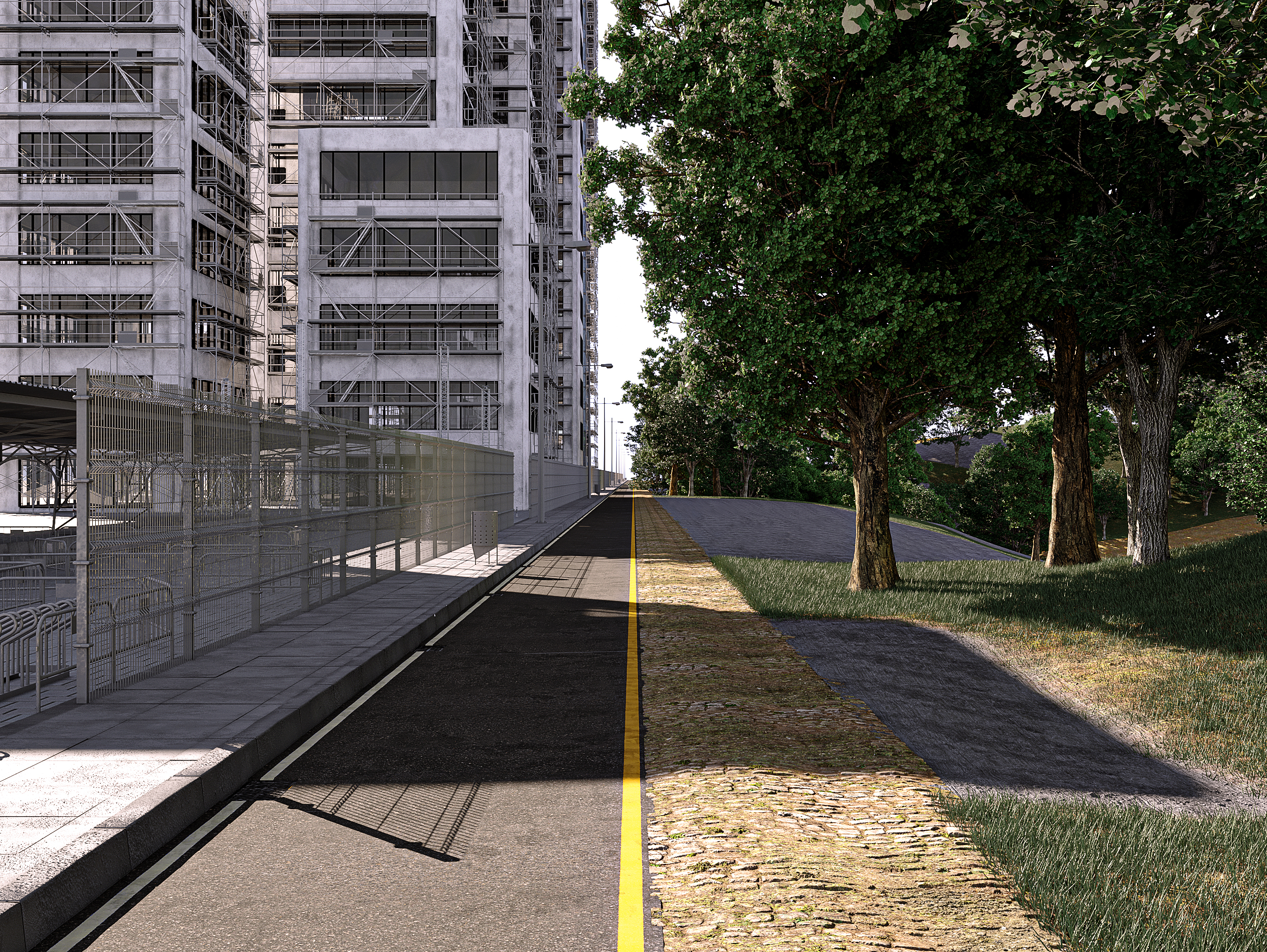
“War Between the Urban Artefact and the Green” by M Hüseyin YILDIZ
War Between the Urban Artefact and the Green is an illustrative representation of conversations had by architects all over the world about how the built world and the natural world coexist. In their visualization, M Hüseyin YILDIZ draws a distinct line of separation between the two sides of our world, with each side sitting in stark contrast to the other. The trees and greenery flourish into rolling hills, yet where the shadows of the concrete urban landscape encroach over the division line, the foliage has been killed off in a visual warning of prediction.
“Street Melody” by Trung Tran
Trung Tran explores the collective beguilement of experiencing music in this submission. The present time rendering depicts a young violin player, Karolina Protsenko. It is an image full of movement and rhythm that perfectly illustrates a dynamic atmosphere on a familiar backdrop that is representative of many city streets today.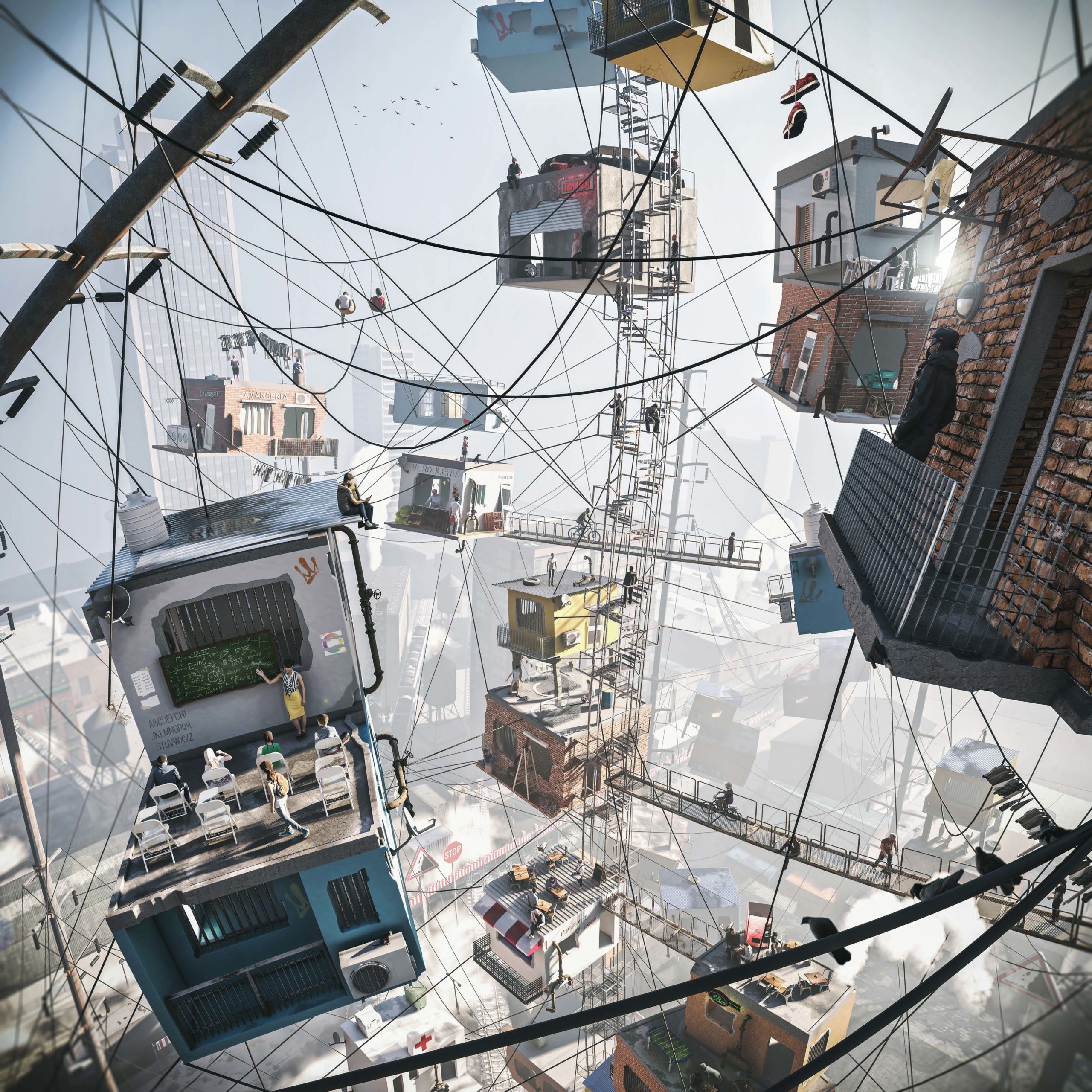
“Hanging by a Thread” by Jeremias Alan Dabbah
Student Winner, 2nd Annual One Rendering Challenge
For many Argentinians, especially those from Buenos Aires, Villa 31 is a household name. It is the most famous — and notorious — slum in Buenos Aires. In their swarming rendering, Jeremias Alan Dabbah seek to expose the delicate balance needed for the survival of and in such a place. Highlighting the stories of individual inhabitants, the image suggests the vulnerable connections that hold them all together in one place, remarking that continued additions to the density of the construction would lead to total collapse—a narrative actual of the reality of Villa 31.
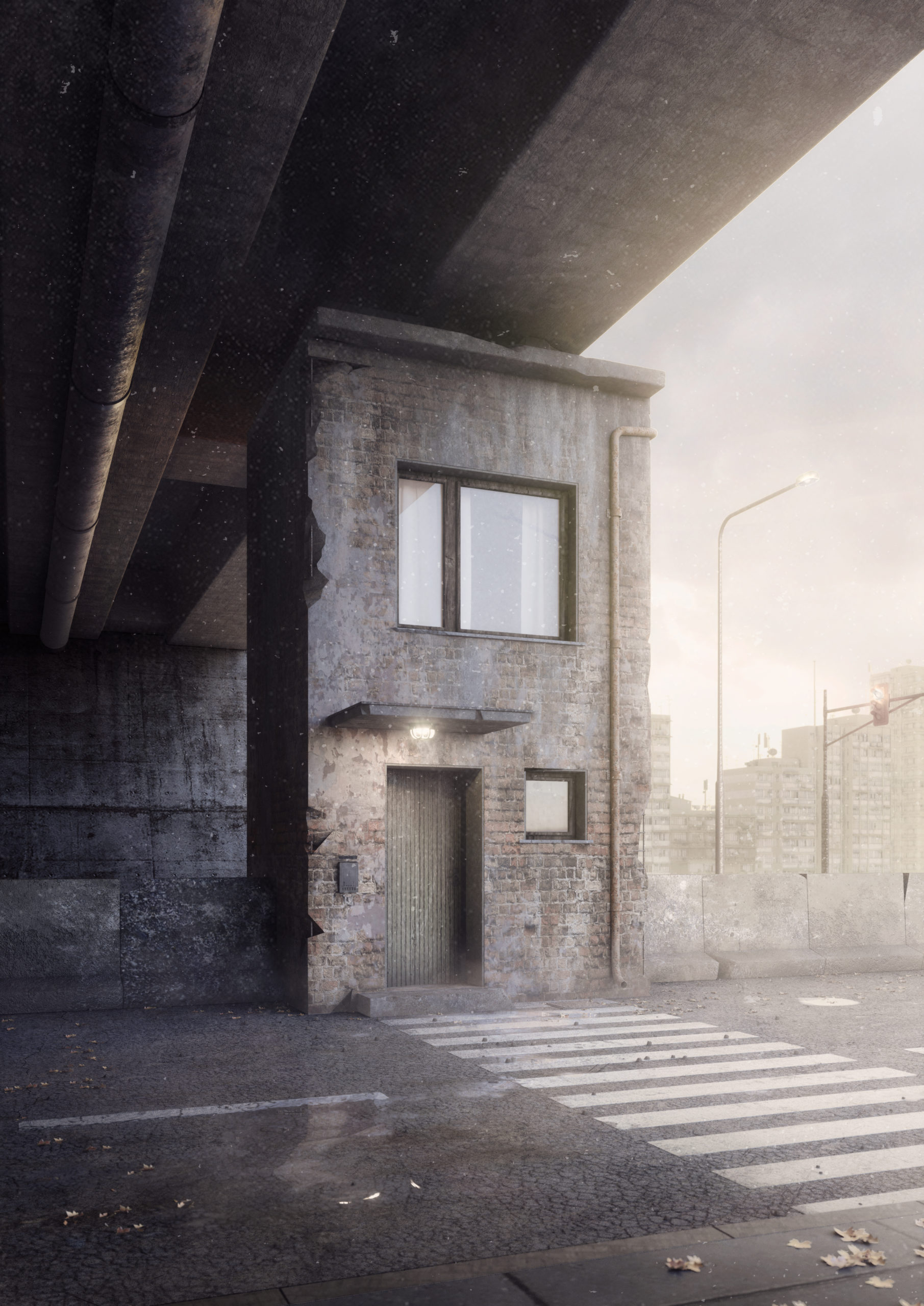
“Under the Bridge” by Stefano Nicolussi
Stefano Nicolussi’s submission is an homage to Frank Kunert’s miniature and photography work (which is also titled Under the Bridge). Here, Nicolussi has recreated the familiar scene; however, in this version, the scene is devoid of the sunny disposition of the bright grassy original. Looking toward the future, it imagines the ever real impact of the featuring motorway overpass as pollution has decimated the surrounding area and forced the imagined inhabitants to flee their home. The image is a dark and authentic reality of many city environments.
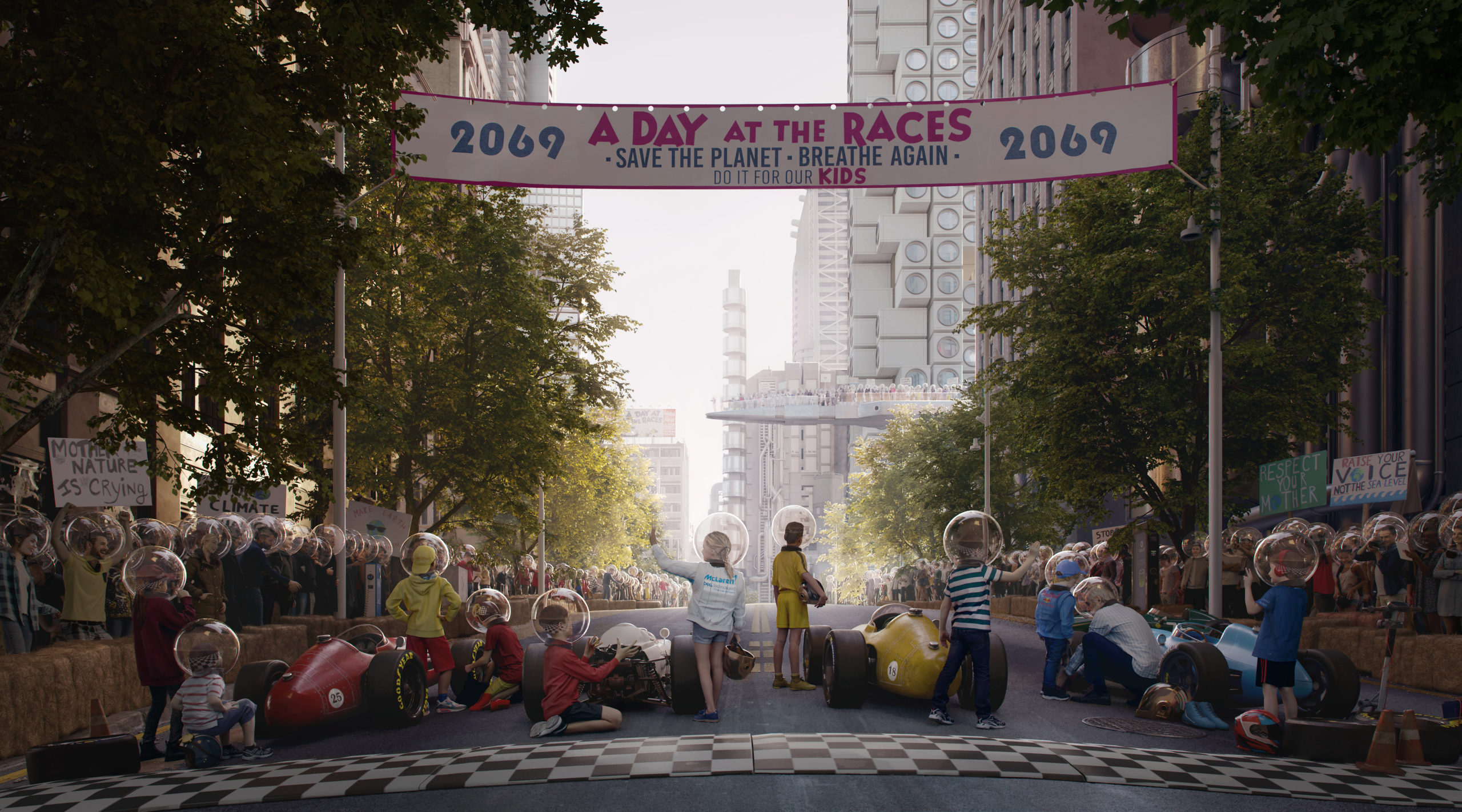
“A Day At the Races” by Vittorio Bonapace
A Day at the races is a rendering with a strong visual narrative. Depicting an imagined reality of a time in 2069, the piece shows a charity boxcar race through the city streets. The race has been organized to combat the inescapable pollution, which has resulted in the population being required to wear bubble helmets. The image is full of detail and depth wherever you look and has a recognizable yet futuristic city backdrop hammering home the intended messaging.
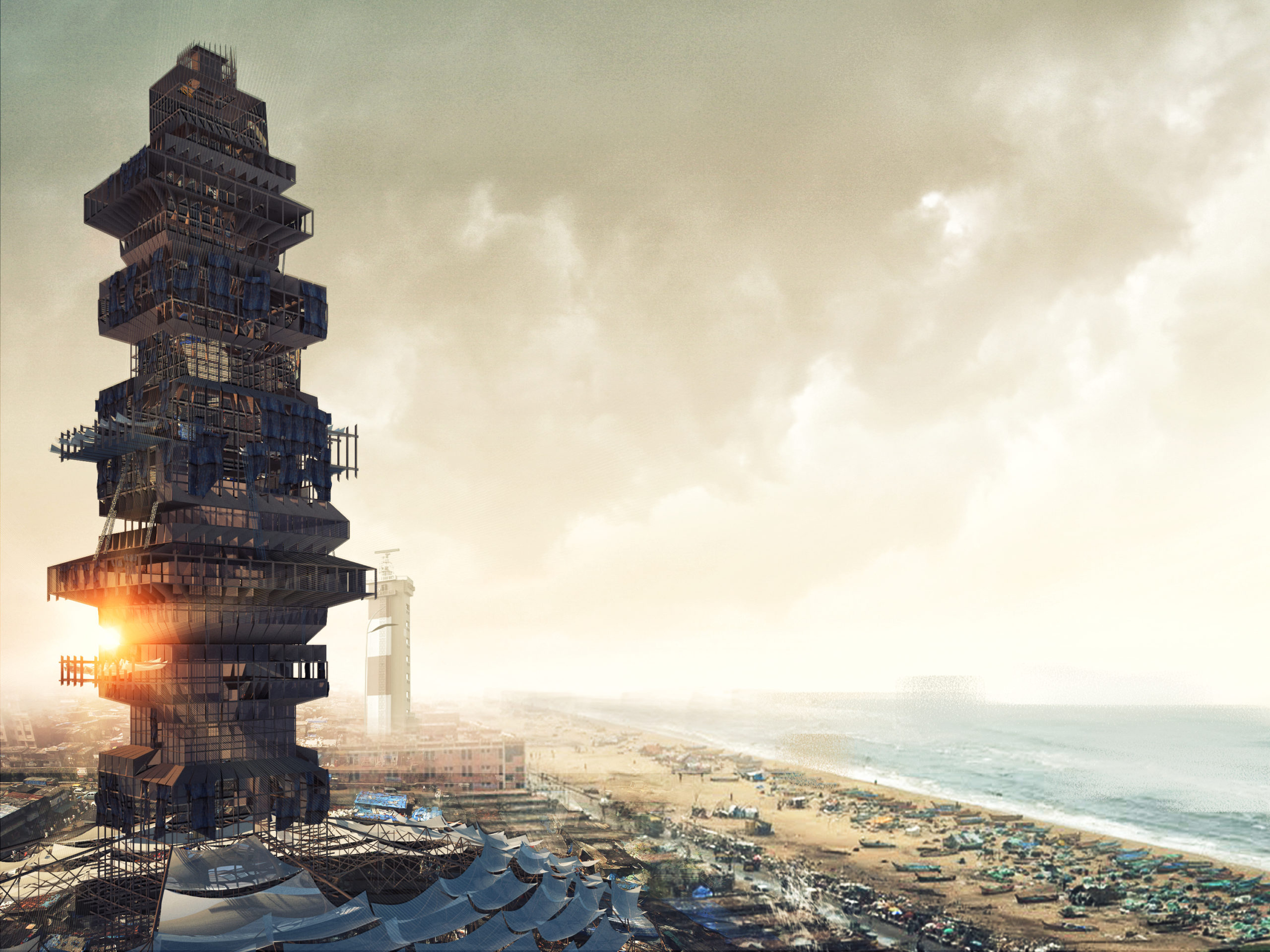
“Shanty City” by Suraksha Acharya, Sharan Sundar and Arun Babu
Shanty City is a collaborative piece by Suraksha Acharya, Sharan Sundar and Arun Babu. It is a vast rending of an expansive seaside landscape. Focusing on the perturbing life of urban fishing communities, the rendering depicts an immense number of fishing vessels needed to supply the growing population. The scene is overlooked by a towering monolithic structure made from recycled materials that is seen as a unique solution that centralizes utility yards and social spaces in the area. Its height is deemed necessary to monitor sea conditions and survive regular tsunamis. Below the sprawling fish market is the lifeblood of the community. The rendering tells a story of a community adapting to ensure its survival.
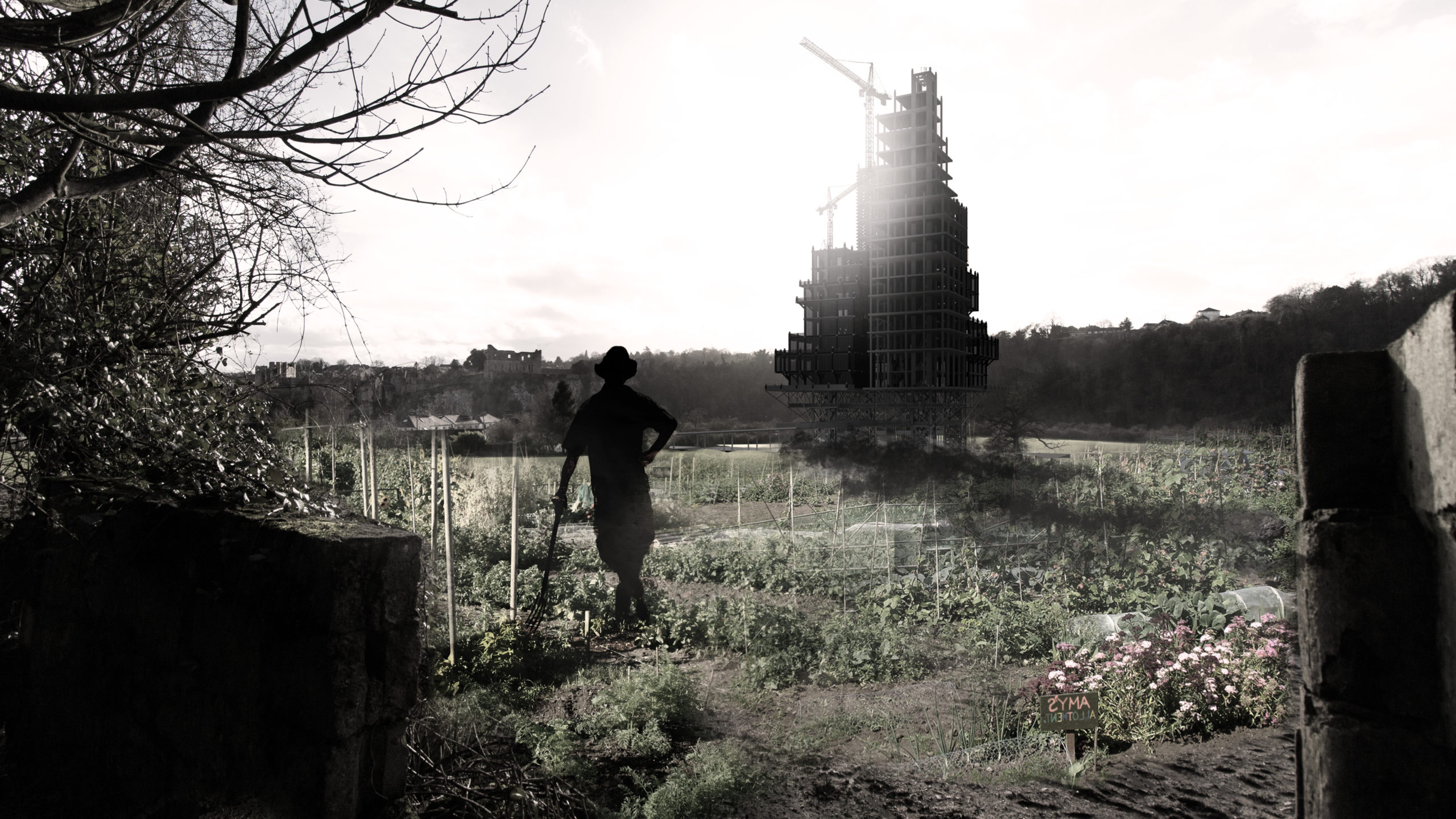
“Sowing the Seeds of Change” by William Campion
In his visual, William Campion explores the juxtaposition of 21st-century farming. Set on a traditional farmland backdrop, the image highlights the agritectural revolution Campion believes will undoubtedly occur in cities. He suggests farmland will be redistributed into vertical solutions to support the increasing needs of society without decimating more land caused by modern farming methods. The image forces the viewer to think about the impacts of global farming and potential solutions to current problems.
We are thrilled to announce the winners of Architizer's inaugural Vision Awards, the world’s biggest awards program dedicated to the art of architectural representation. Sign up to receive future program updates >
